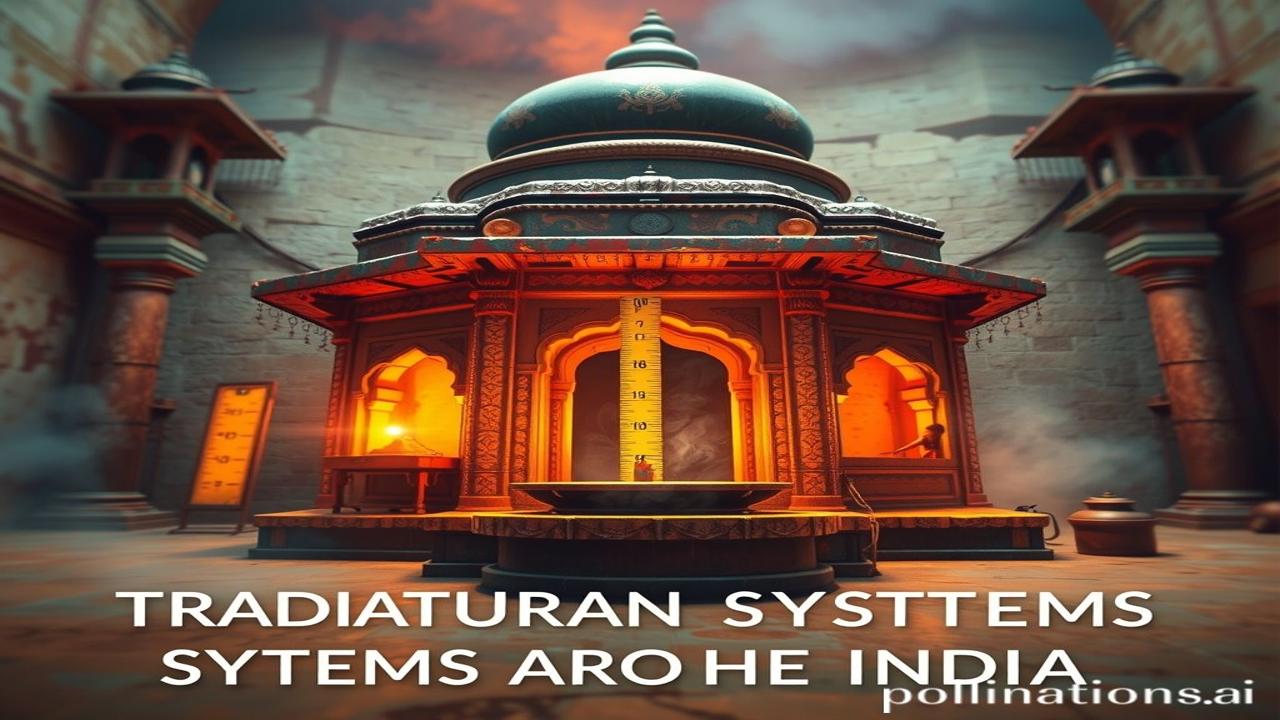Waqt Ki Parchhaiyon Mein: Unveiling India’s Forgotten Measurement Systems
Kabhi socha hai, ki aadhi raat ko, jab chandani chhat se chhan kar aangan mein aati hai, tab purane zamane ke logon ne duniya ko kaise maapa hoga? Hum toh centimetre, inches aur kilograms mein aaram se apni zindagi naap lete hain. Lekin, woh log, jinke paas ye sab nahi tha? Unki kahaniyan waqt ki dhool mein kuch aisi chhupi hain, jinki khushboo aaj bhi Bharatiyata ke dil mein basi hai. Chalo, aaj hum usi khoj mein nikalte hain.
Traditional Measurement Systems Across India: A Glimpse into the Past
India, a land of diversity, has always had its own unique ways of doing things, especially when it came to measuring things. Think of it – before the standardized metric system became ubiquitous, our ancestors used their bodies, the environment, and locally available materials to define units of length, weight, time, and volume. Yeh traditional measurement systems sirf ek tareeka nahi tha cheezein naapne ka, balki yeh unki zindagi, culture aur samaj ka hissa tha.
These systems originated in ancient times, with evidence found in the Indus Valley Civilization (c. 3300-1700 BCE). Imagine the skilled artisans of Mohenjo-daro, meticulously crafting bricks of uniform size using their own standardized measures. The Arthashastra, written by Chanakya in the 4th century BCE, also describes a complex system of weights and measures used for trade and governance. These systems weren’t uniform across the country; they varied region to region, community to community, each adding its own flavour to the tapestry of Indian measurement. This is important because it shows the ingenuity and adaptability of our ancestors in creating practical solutions based on their local resources and needs.
The ‘Angul’ and ‘Vitasti’: Body as a Measuring Stick
Imagine a bustling marketplace in ancient Madurai. A farmer, with sun-kissed skin and calloused hands, measures out rice using his ‘anjali’ – the amount held in his cupped hands. Another merchant measures cloth using his ‘angul’ (width of a finger) or ‘vitasti’ (span between the thumb and little finger). These measurements weren’t exact science, but they were deeply personal, rooted in everyday life.
“Aree bhaiyya, thoda aur daal do! Yeh vitasti toh choti lag rahi hai,” says an old woman haggling for fabric, her voice raspy with age. The shopkeeper, a young man with a mischievous glint in his eye, chuckles, “Maa ji, hum toh har roz naapte hai, humko pata hai kitna dena hai!”
Rulers, artisans, farmers – everyone used these body-based measurements. The ‘dhanu’ (length of a bow), ‘krosa’ (distance shouted) were all part of this lived reality. These systems reflected a deep connection to the body and the surrounding environment.
The ‘Tola’ and ‘Ser’: Weight and Commerce
Weight measurements were crucial for trade and commerce. The ‘tola’, a standardized weight, became a common unit, varying slightly across regions. A ‘ser’ was often used for larger quantities, and its value could differ depending on the commodity being traded.
Imagine a bustling port city, like Surat, in the 17th century. Ships from across the globe would dock, laden with spices, textiles, and precious metals. Merchants, clad in fine silks, would haggle over prices, using ‘tola’ and ‘ser’ to weigh out the goods. The air would be thick with the scent of cardamom, cloves, and saffron, a symphony of commerce and culture.
Time: Beyond Clocks and Watches
Measuring time wasn’t just about clocks; it was interwoven with rituals, seasons, and celestial movements. The ‘ghati’ (approximately 24 minutes) and ‘prahara’ (three hours) were commonly used to mark the passage of time. The position of the sun, the movement of stars, and the changing seasons were all used to track time, guiding agricultural practices and religious observances. Festivals were – and still are – timed according to the lunar calendar, linking communities to the cycles of nature.
Cultural Significance Today: Echoes of the Past
Even today, the echoes of these traditional measurement systems can be found in India. We see it in the way older generations measure ingredients in recipes with “andaaz” (approximation), a handful of this, a pinch of that. In rural areas, land is still sometimes measured in ‘bighas’ or ‘acres’, local units that connect people to their ancestral lands. During festivals, rituals often involve specific quantities of ingredients measured using traditional methods, reinforcing cultural practices.
Bharatiyata, the essence of Indianness, lies in this continuity. It’s in the way we connect to our past, adapting and evolving while retaining our core values. These traditional systems, although not used in formal settings, remind us of our heritage, of our ingenuity, and of our deep connection to the land.
Fun Fact or Myth-Buster: The Ever-Changing ‘Mile’
Log samajhte hain ki mile ek uniform measurement hai. Lekin asli sach yeh hai ki India mein, “kos” ya “mile” ki definition region ke hisab se badalti thi! The distance covered in one ‘kos’ could vary significantly depending on the terrain and the local traditions. So, a journey of 10 ‘kos’ in one region might be shorter or longer than the same journey in another!
Visual and Sensory Layer: A Journey through Time
Imagine the air in an ancient Indian village, thick with the scent of wood smoke, spices, and freshly tilled earth. The temple walls, cool to the touch, adorned with intricate carvings depicting scenes from the epics. The rhythmic chanting of mantras echoing through the streets, punctuated by the sounds of bustling commerce. This is the world where these traditional measurement systems flourished, a world of tangible connection and human ingenuity.
अंतिम विचार या उद्धरण / Closing Insight or Quote
These systems are more than just units; they are stories etched in the fabric of our culture, a reminder of our connection to the land and the ingenuity of our ancestors. As the Sanskrit shloka goes, “वसुधैव कुटुम्बकम्” (Vasudhaiva Kutumbakam) – the world is one family. Similarly, these diverse measurement systems, though different, were all part of the same family, bound together by the spirit of Bharatiyata.
